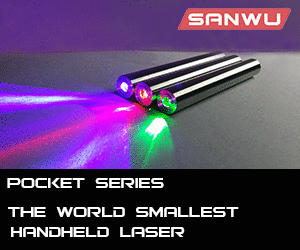So you've had a laser for months, pushing it to the edge of its limit.

I'd say you're lucky it lasted this long.
Exactly. The driver can't possibly be dead; if it were you'd get no output whatsoever, or erratic output, unless it failed to full power (which is very, very unlikely). At the currents involved you may damn well save on the FlexDrives and go direct drive instead. You end up blowing up the diode in any case; nobody does any long-term runtime tests at these currents.
A dead short/shorted wire/contact fault is unlikely too, that would cause no output. Besides, there isn't any torsional stress on the wires within the host (or, at least, there shouldn't be). It has no reason to come apart suddenly if it has not done so.
These diodes were spec'd (if I remember the datasheet correctly) for no more than around 700mW.
They can handle 1W fine, 1.2-1.3 would be pushing it but they can live with it.
On the flip-side, however, there's been reports of bond wires broken at 1.5A, along with COD. And at 1.9W out (that'd be in excess of 2A in), not only is the diode both at risk of bond wire failure and COD (catastrophic optical damage), it also has a TDP of close to 8W which needs to be dissipated.
Ignoring the current issue completely, you'll notice that even with direct press heatsinks, only the rim of the diode (not the can) touches the heatsink. The die itself is on a pedestal and relies solely on that little rim for cooling.
At 8W, it will get very hot, very quickly. Although the heatsink may seem cool, and gradually warm up, actual diode temperatures may be much higher.
It's a bit like the older CPUs without the IHS, the die would often be 10 to 20C above the temperature of the heatsink itself.
Now, once you factor in current, there's no surprise it did blow.
Anyone remember the PHRs? They were rated for around 95mA by the manufacturer. The enthusiast safe operating current was 110mA give or take a few. They'd last at 110mA, and they'd start dropping dead at 120mA. A few made it to 130 or 140, but not for long. Same here. 700 is fine, 1000 is a safe margin, and 1500+ is just asking for trouble. Sure, it'll last, but not for very long.
It seems that these diodes aren't nearly as fragile as the PHRs, consequently, nobody pays any attention to the fact that the risk of bondwire damage and COD still exists.
The poor diode's had a hard life. I'm still surprised it didn't go tits-up earlier. Then again, these are hardy beasts.
 Im afraid that the was some exposed wire inside that shorted, killing the driver or diode or BOTH!
Im afraid that the was some exposed wire inside that shorted, killing the driver or diode or BOTH!  HELP! Any Ideas of whats going on?
HELP! Any Ideas of whats going on?


